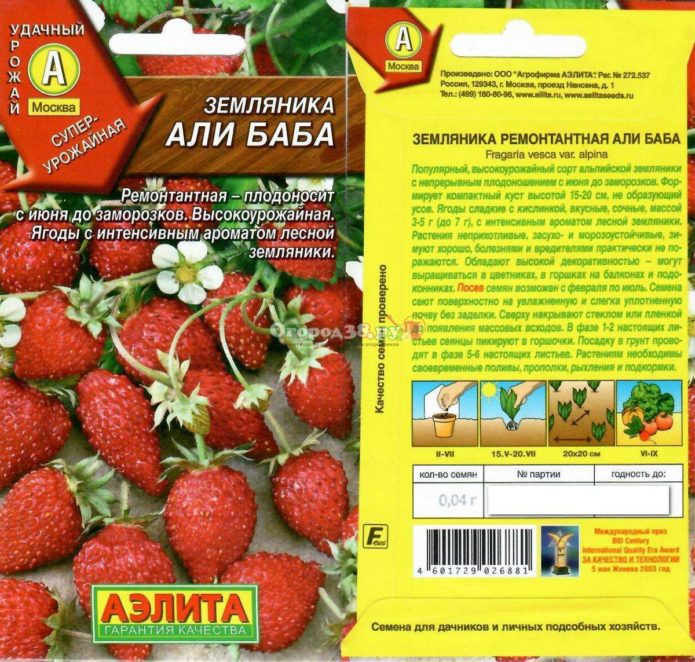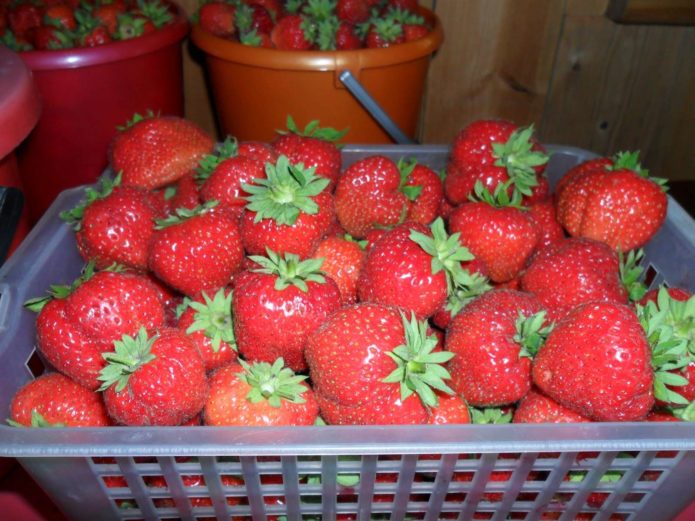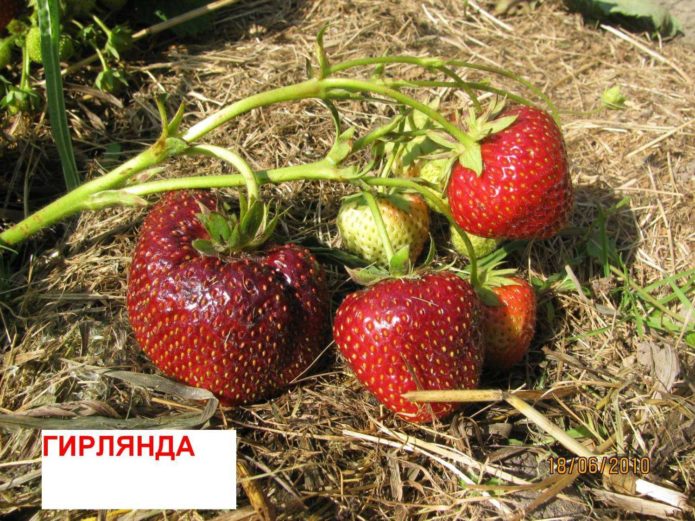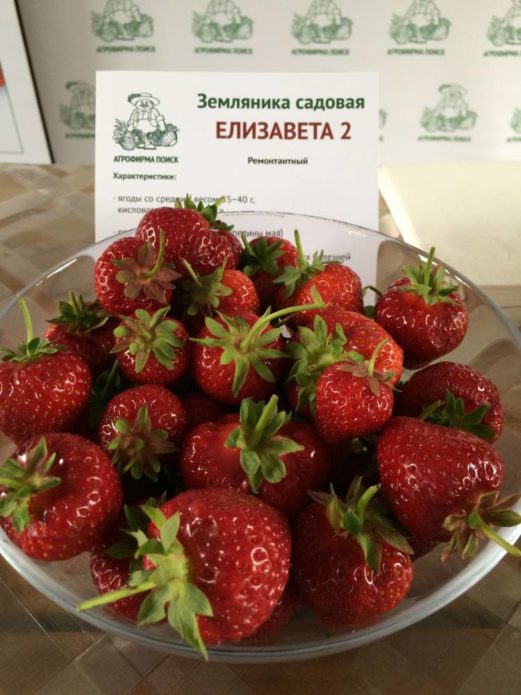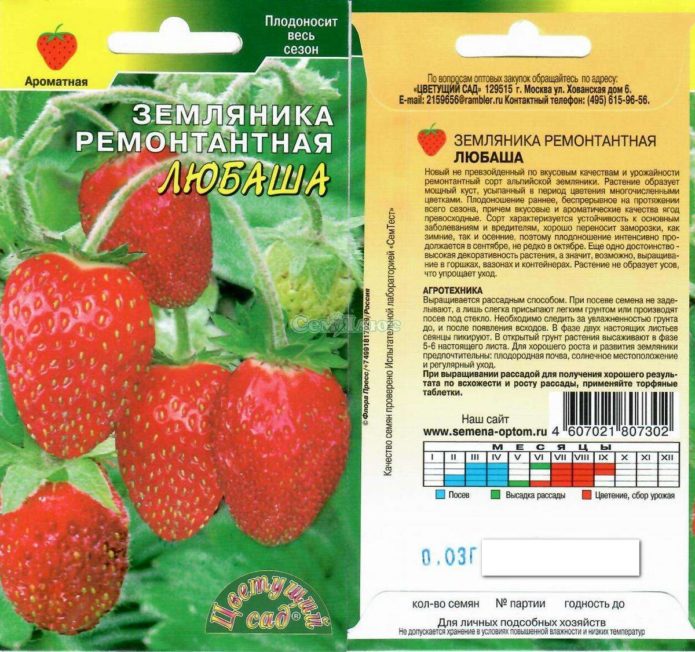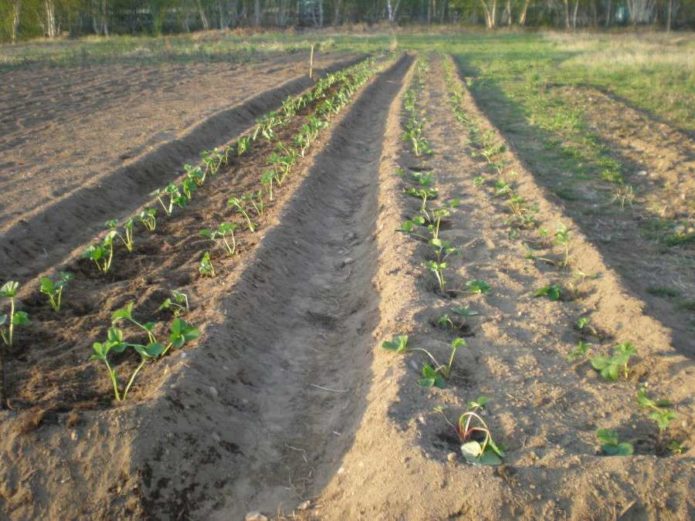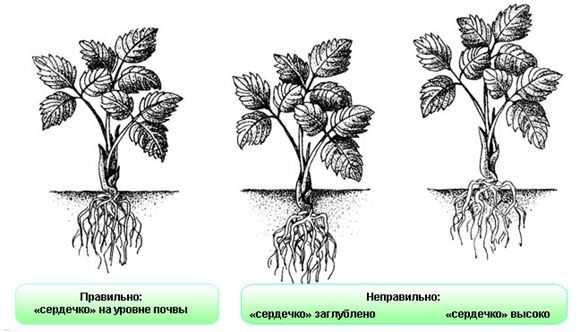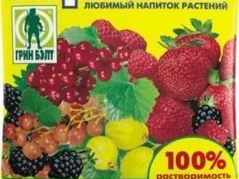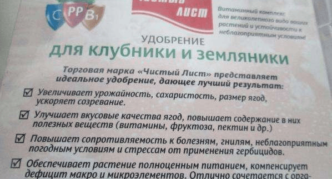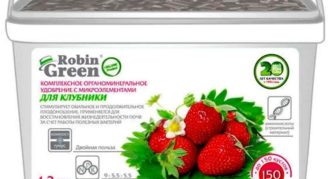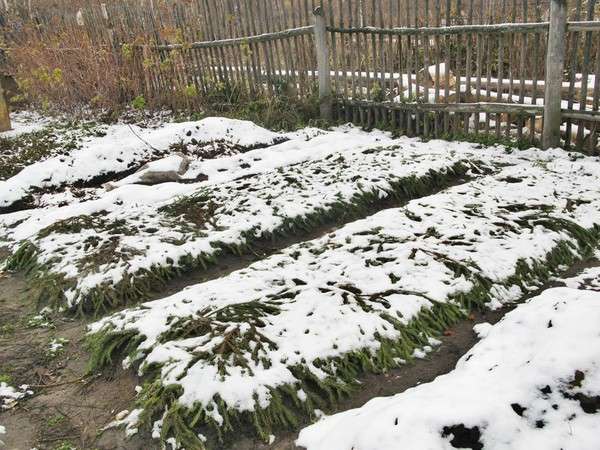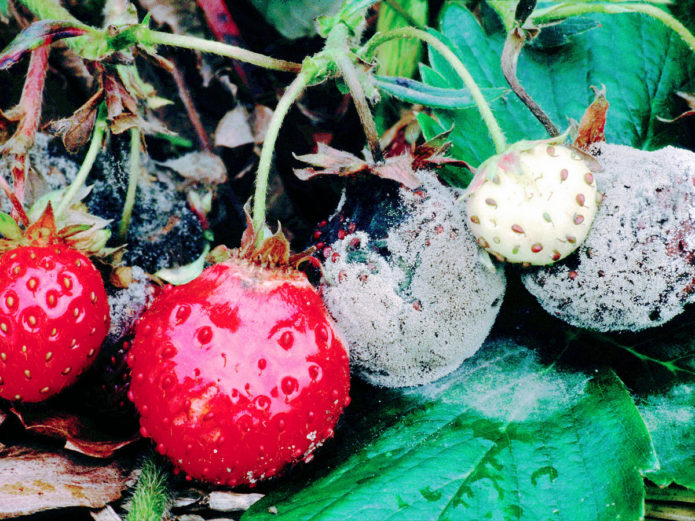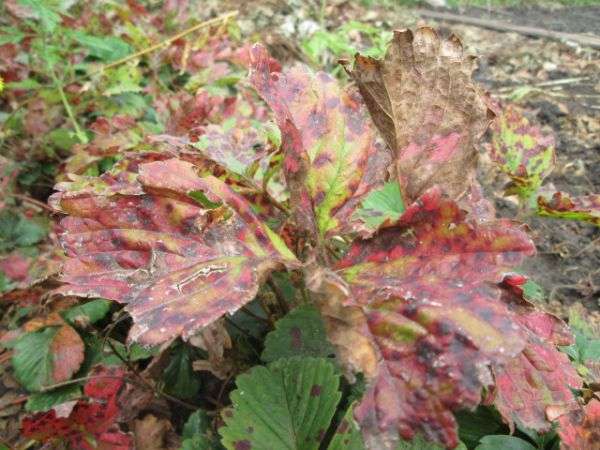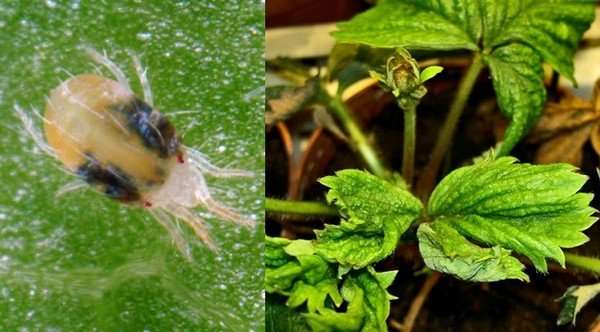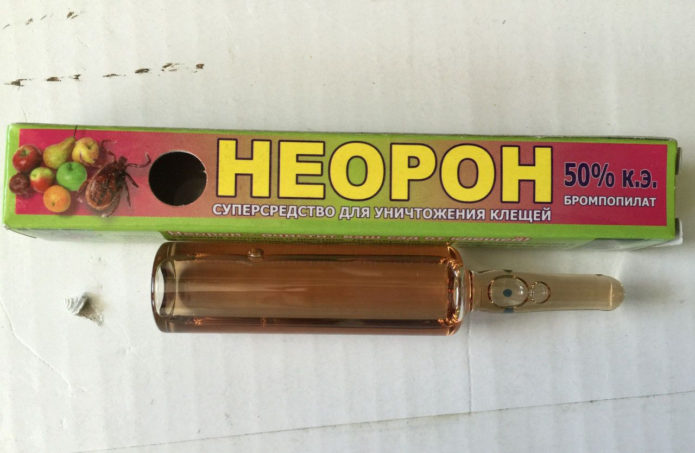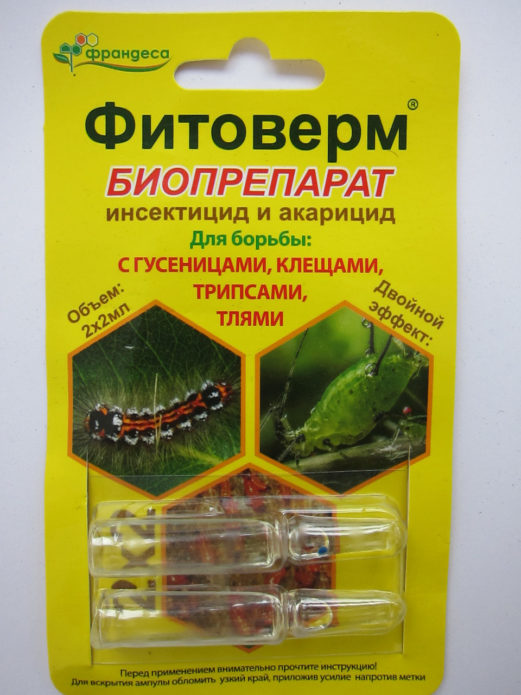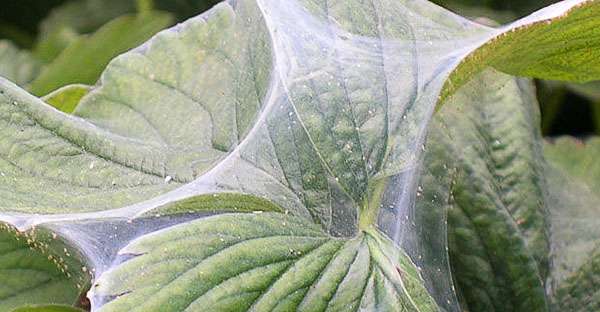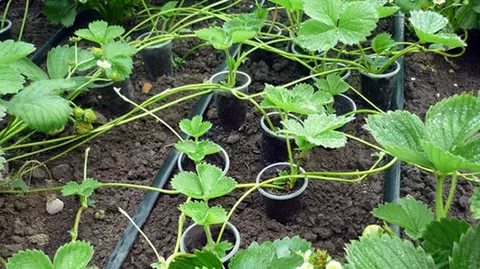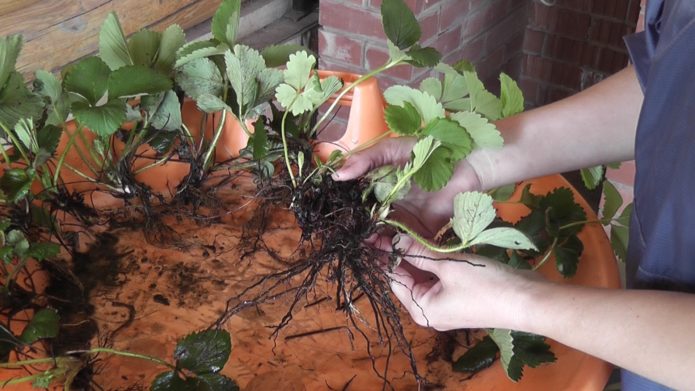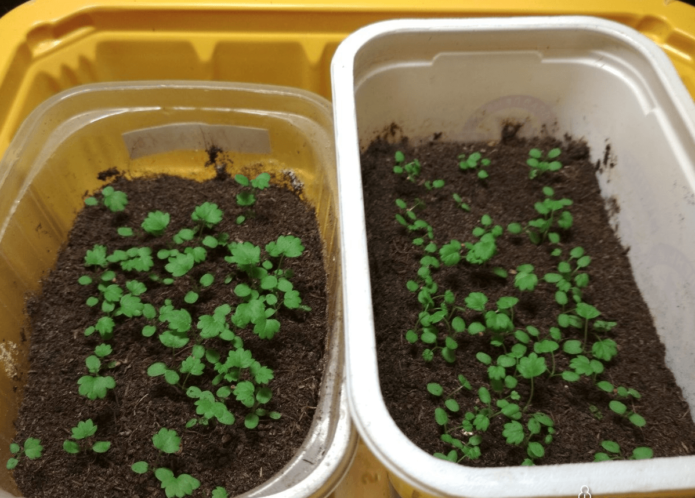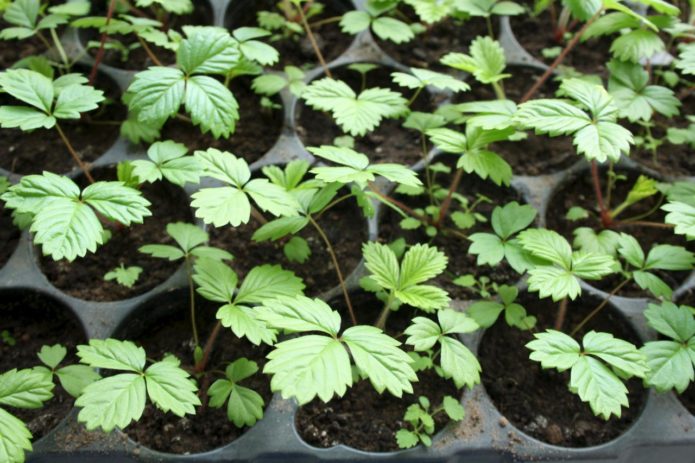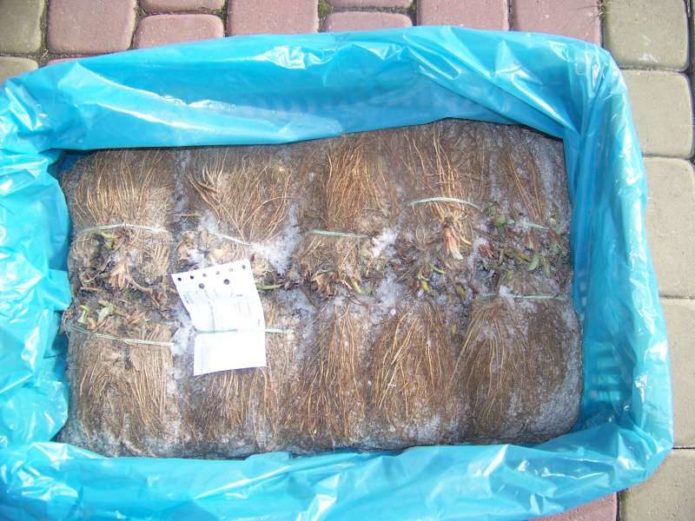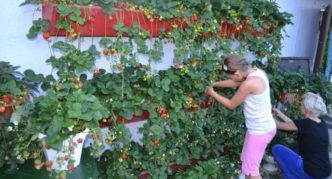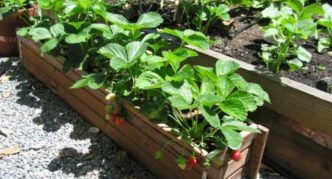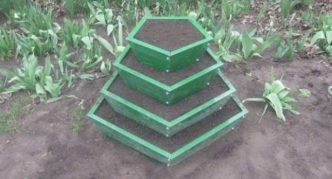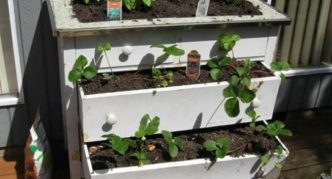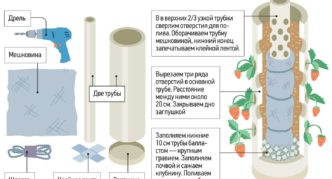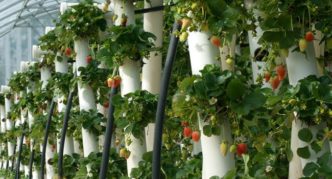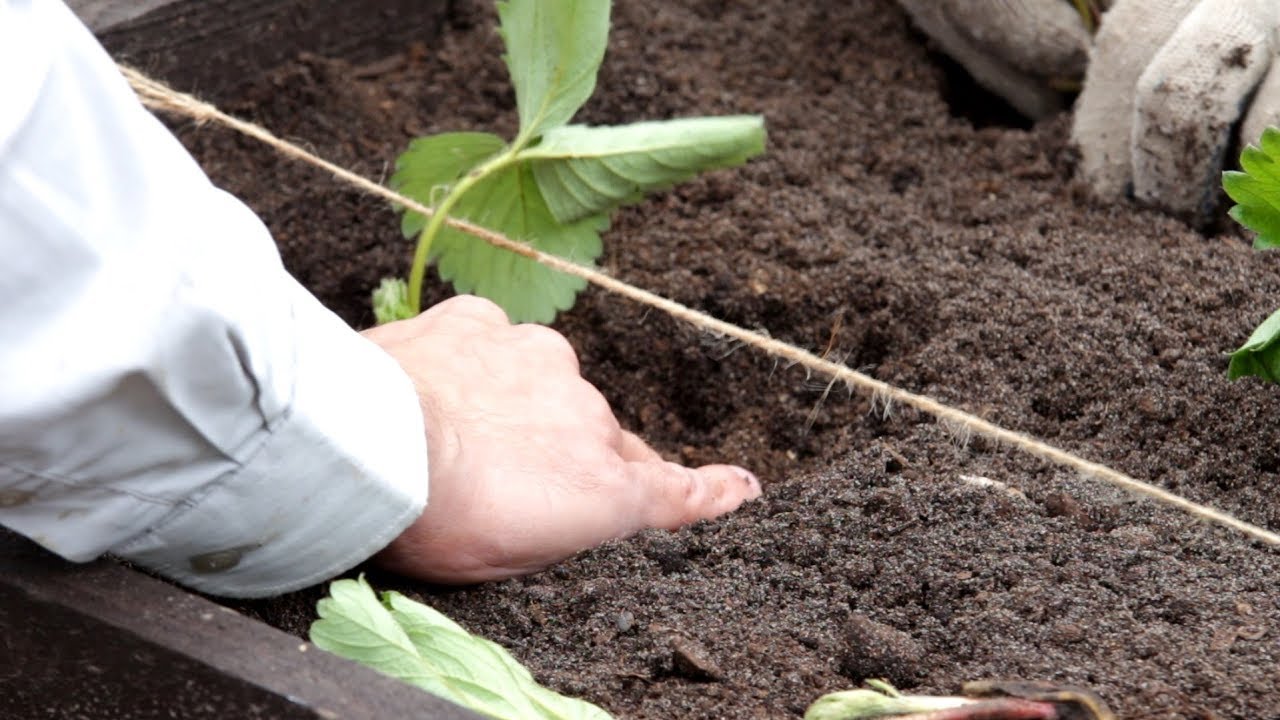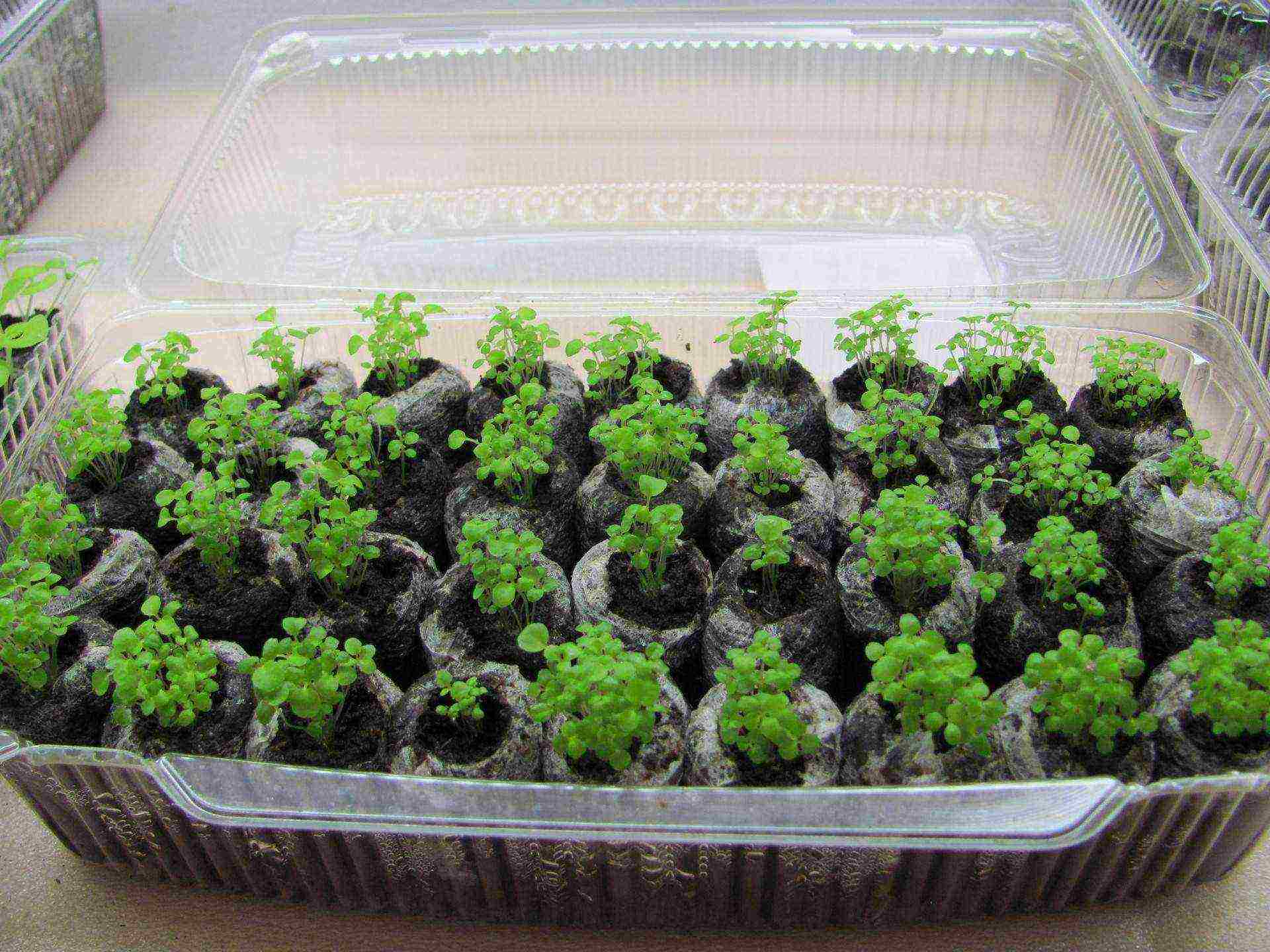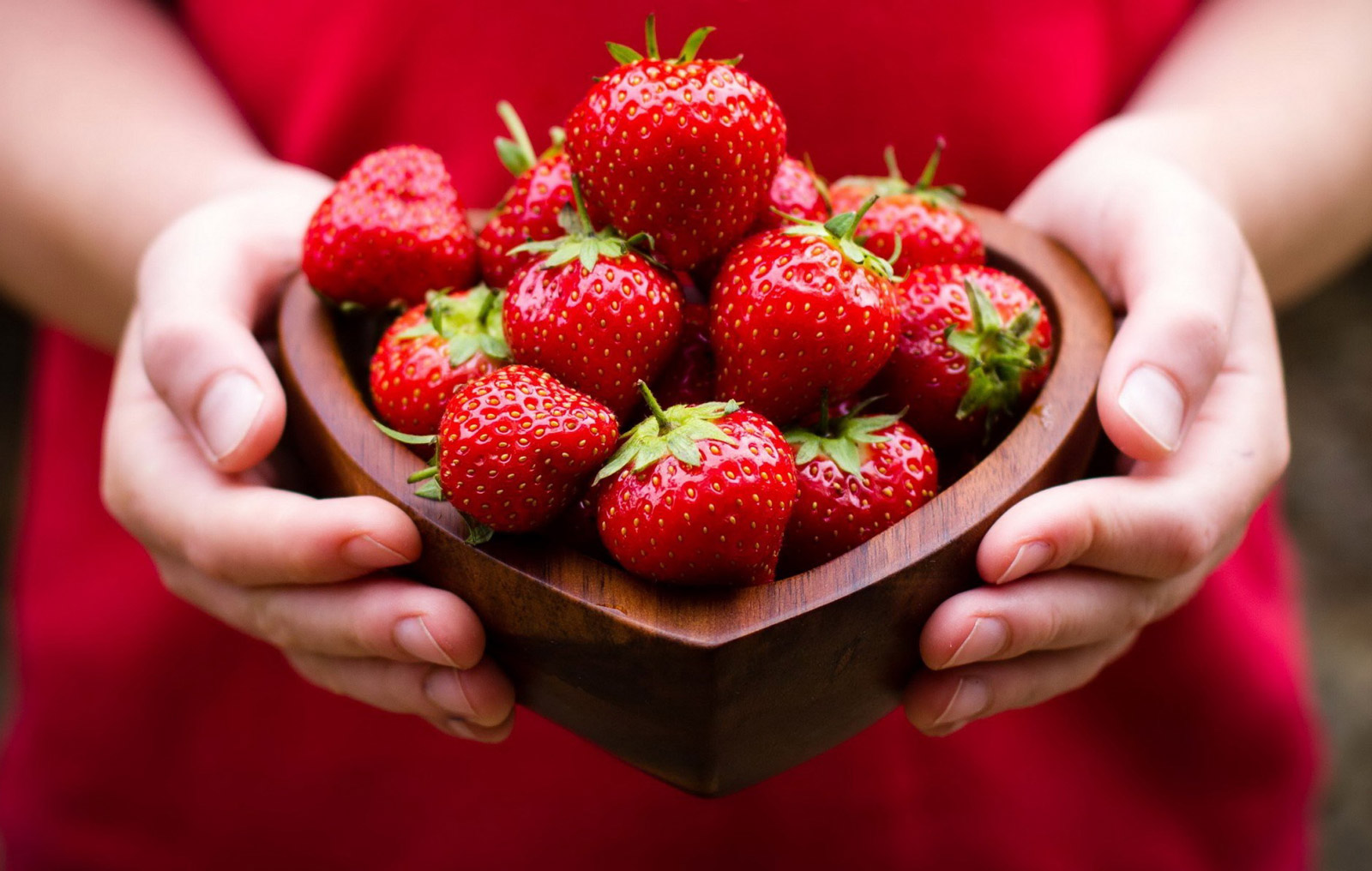The remontant strawberry is attractive because it gives its fragrant, juicy and sweet berries throughout the summer and early autumn. True, for this you have to try. In the process of planting and growing it, there are many tricks and specific points. We will try to reveal them all in more detail so that the gardener does not have any questions.
Content
Remnant strawberries and their popular varieties
Many gardeners know that garden strawberries are often mistakenly called strawberries. Without going into details of terminology, today we will talk specifically about varieties of garden strawberries, planting and growing them. Strawberry varieties that bear fruit throughout the growing season are called remontant varieties. In different varieties, fruiting can be either continuous or in waves.
Ali Baba
This is a mustacheless strawberry variety of Dutch selection with a semi-spreading bush 15-20 centimeters high. Berries are deep red in color, conical in shape and an average weight of 3-5 grams. The pulp is white, aromatic with a pleasant sweet and sour taste. The number of inflorescences is 15-20 times greater than that of similar varieties. Fruiting is continuous, begins in mid-June and ends with the onset of frost. The variety is winter-hardy and drought-resistant. It is immune to fungal diseases. High-yielding.
Yoke
It is also a mustache-free variety, distributed in all regions of crop cultivation. It blooms and bears fruit continuously for up to three months in the Central lane and up to five months in the southern regions. The bush is semi-spreading, the berries are large (17-23 grams). The taste is sweet and sour, pleasant. Tasting score 4.6 points. Productivity up to 163 kg / ha. Winter hardiness - high, drought resistance - medium.Disease immunity at the level of standard varieties.
Seasons
Mustachioed variety, similar in quality to wild strawberries. Semi-sprawling bush 20-25 centimeters high. The berries are fragrant, conical, deep red, sweet. Bears fruit twice. First time in June brings up to 1 kg / m2, and the second time in August - up to 0.5 kg / m2... The variety is ampelous, that is, it bears fruit not only on the plant itself, but also on the mustache.
Garland
A very early and productive baleen variety. Spherical bush, medium density. Flowering and fruiting is continuous. Begins in May before rooting ends and ends in October. The berries are conical in shape, very large, with an average weight of 26-32 grams. The taste is excellent, the tasting score is 4.1 points. The yield per season exceeds 1 kg per bush or 616 kg / ha.
Elizabeth
An early mustachioed variety. The bush is upright, semi-spreading. The berries are large, but by the fourth year of cultivation they are very shallow. Tasting taste score 4.7 points. Fruiting in waves. The first flowering occurs in May, and the berries ripen in June. The second wave is harvested in August, and the third in October. Average yield - 350 kg / ha. Winter hardiness of the variety is average, immunity to diseases and pests is above average.
Lyubasha
An early ripening variety. The bush is powerful, semi-spreading, well leafy, without whiskers. The berries are red, conical, large (with an average weight of 12 to 23 grams). The taste is sweet with aroma. Tasting score - 4.9 points. Low yield - 104 kg / ha. The variety has high winter hardiness, medium drought resistance and heat resistance. Immunity to major fungal diseases at the level of standard varieties.
Planting remontant strawberries
This culture requires a lot of attention. Before you start planting it, you should carefully study the rules.
Choosing a place for strawberries on the site
The strawberry grows well and develops in lighted or slightly shaded areas. In a dense shade, it will bear fruit poorly, and the berries will grow small and tasteless. It is important to follow the principles of crop rotation. Strawberries should not be planted after the following crops:
- potatoes;
- cabbage;
- cucumbers;
- pepper;
- eggplant.
The best predecessors for it are:
- carrot;
- salad;
- garlic;
- beet;
- bow;
- grain crops;
- siderates;
- radish;
- peas;
- beans.
The site is chosen flat or with a slight slope to the southwest. In the lowlands, strawberries will rip out, so they should not be planted there. The optimum level of soil acidity is pH 5.5, the maximum allowable is pH 4.5. Highly acidic or alkaline soils are not suitable for growing strawberries. The best results are obtained by planting on light loam and sandy loam. All other soils need to be improved before planting.
Soil preparation
They begin to prepare the soil in the fall. The plot is freed from weeds, and even better, if you first grow siderates on it:
- mustard;
- peas;
- phacelia;
- barley;
- lupine;
- alfalfa, etc.
If the siderates have been grown, then they should be mowed and left on the site. Then evenly sprinkle humus or compost at the rate of one bucket per square meter, wood ash in the amount of 3-5 l / m2 and superphosphate - 30-40 g / m2... If the soil is too acidic - add lime to fluff 0.5 kg / m2... After that, the soil is plowed or dug up onto the bayonet of a shovel, turning over the layers of earth. Lumps do not need to be broken - this is done in the spring before planting.
Video: preparing the soil for planting strawberries
Planting scheme of remontant strawberries
It is more convenient to plant and grow remontant strawberries according to a two-line bush scheme.In this case, each tape consists of two lines spaced at a distance of 30 centimeters, and the plants in them are planted at an interval of 25-30 centimeters. The gap between the ribbons is usually chosen equal to 70 centimeters.
Landing dates
It is necessary to plant remontant strawberries during the period of active root growth. This happens twice:
- In spring, when the soil warms up to 12-15 ° C.
- In summer, late July — early August.
Spring planting is preferable, since in this case the first (albeit small) harvest can be obtained in the current season, and also at this time the plants take root and take root faster. Summer planting (especially in areas with hot climates) is associated with additional labor costs for frequent watering, loosening the soil and shading unrooted plants from the hot sun.
Planting remontant strawberries
In the spring, as soon as the soil warms up enough and the threat of return frosts has passed, you can start planting. It is better to do this in the late afternoon, before sunset. This process is simple and it looks like this:
- Prepared in the fall, the bed is leveled with a rake.
- If mulching with a black film or black spunbond is supposed, then spread the selected material on the garden bed and strengthen it with special pegs.
- The holes are marked with a cord and tape measure.
- At the landing sites in the covering material (if used), cross cuts are made up to 10 centimeters long.
- Small holes are made and watered abundantly with water.
- While the moisture is absorbed, the seedlings are prepared for planting:
- separate the bushes from the bunch, gently freeing the roots;
- if there are many leaves on the bush, then cut off the extra ones, leaving one or two strong ones;
- inspect plants, remove damaged roots if necessary;
- shorten the roots to a length of five centimeters, if this has not been done earlier;
- the roots are soaked in a solution of a growth stimulator (Epin, Kornevin, Heteroauxin) for 15 minutes;
- dip the roots in a solution of mullein and clay (talker).
- Plants are planted using a narrow scoop, lowering the roots vertically down. They compact the soil around the plant, not directly approaching the bush, so as not to injure the roots. At the same time, make sure that the heart is at ground level.
- Water twice until water is completely absorbed.
- The next day they are loosened.
Video: a way to quickly plant strawberries under agrofibre
Care of remontant strawberries
This culture is quite demanding to care for.
Watering
This is the most important step in caring for remontant strawberries. It should never dry out, but swampiness should not be created either. In the first 7-10 days after planting seedlings (this is especially true for summer planting), the beds are watered and loosened every other day. It is watered in the evening, loosened the next day in the afternoon or in the evening (it is clear that loosening is excluded when using covering material for mulching). Watering rate - 2-3 liters per bush. After this time, the soil is mulched with humus, compost, coniferous litter, etc. In the future, the need for irrigation is determined based on the degree of soil moisture - it must be constantly wet at a depth of three to five centimeters. During the ripening period of berries, it is advisable to water the strawberries at the root in order to avoid fungal diseases and rot. It is very convenient to use a drip irrigation system for these purposes.
Top dressing
As a rule, varieties of remontant strawberries have high yields. Therefore, a significant amount of food is required.
When applying fertilizers, you need to monitor nutritional balance and avoid overdose. Excessive nitrogen addiction is especially dangerous.An excess of this element leads to a rapid growth of the green mass and a decrease in the number of berries, as well as to the accumulation of nitrates in them.
Table: fertilizers applied when planting and feeding remontant strawberries
| Fertilizers | Dosage | Timing |
| Fertilizers used for planting | ||
| Organic (humus, compost, peat) | 10 kg / m2 | In the fall, when preparing the garden |
| Superphosphate | 30-40 g / m2 | |
| Wood ash | 3-5 l / m2 | |
| Fertilizers used for feeding | ||
| Urea | Dissolve 50 grams in one bucket of water and pour one liter per bush | For newly planted seedlings - when 2-3 new leaves appear. For mature plants, mid-April. |
| Potassium monophosphate | Dissolve 25 grams in one bucket of water and pour one liter per bush | After flowering |
| Infusion of organic | An infusion is prepared by applying one of the components to a bucket of water:
Use one liter per plant, additionally diluting with water in a ratio of 1: 5. During the season, make 3-4 such feeding. | |
Some gardeners prefer to use ready-made complex mixtures of fertilizers that contain all the necessary macro- and microelements. In this case, you need to adhere to the instructions attached to each specific fertilizer. When purchasing, preference should be given to well-known brands. You can recommend the following:
- Agricola;
- Clear sheet;
- Robin Green;
- Buysk fertilizers;
- Florovit;
- Good power.
Photo gallery: complex fertilizers for strawberries
- Complex fertilizer for strawberries Agricola
- Complex fertilizer of the trade mark Pure Leaf increases the resistance of strawberries to diseases
- Robin Green fertilizer provides strawberries with all the necessary nutrients
- Buiskie Fertilizers is a well-known and reliable trade mark
- Polish fertilizer Florovit is specially developed for feeding strawberries
- Fertilizer for strawberries Good power includes all the necessary elements and vitamins
Pruning remontant strawberries
During the season, the whiskers are periodically removed (unless they are required for reproduction) so that they do not take on the strength of the plant. And also during the season, dried and damaged leaves are removed. After the end of fruiting, you should cut off the fruiting peduncles and part of the old leaves, leaving 3-5 pieces on each plant. Full pruning of leaves in autumn for remontant strawberries is not carried out. Leaves and whiskers are cut with scissors or pruners at the base, trying to keep the stalks as short as possible.
Shelter of remontant strawberries for the winter
Even frost-resistant strawberry varieties are prone to freezing, especially in regions with little snowy winters and unstable weather conditions. Therefore, the beds need to be insulated for the winter, using the available suitable materials for this. Well suited for these purposes:
- spruce branches;
- needles;
- shavings;
- straw;
- spunbond.
In regions with snowy winters, additional shelter may not be used - the snow perfectly protects strawberries from frost.
Protection against pests and diseases of remontant strawberries
Modern varieties of remontant strawberries usually have medium or increased resistance to fungal diseases, but the risk of damage always remains.
The most common diseases of remontant strawberries
Since strawberries are grown under constant moisture conditions, favorable conditions are often created for the development of fungal diseases. Their prevention consists of the following activities:
- Treatment of the soil before planting with a 2% solution of copper sulfate. The beds are treated with the same solution immediately after the snow melts before the plants wake up from winter sleep.
- Disinfection of seedlings with a weak solution of potassium permanganate. Adult plants are treated with the same solution before flowering.
- After flowering, 1-2 treatments with Horus or Teldor fungicides are carried out, and this is done no later than 10 days before the berries ripen.
- Fitosporin-M, which is a safe biofungicide, can be used throughout the season. Berries are good for consumption on the day of processing.
- Weed control.
- Avoiding thickening of landings.
- Timely pruning of diseased leaves and peduncles.
Gray rot
Spores of the pathogen fungus overwinter in the affected fruits, leaves, peduncles. Therefore, they must be removed and burned in a timely manner. The first signs of the disease are:
- The appearance of small brown spots on the berries, which quickly increase.
- The appearance of a smoky bloom on the surface of the berries, which consists of fungal spores.
- The berry becomes watery and unusable.
- As a result, the berry dries up and turns into a gray solid lump.
It is quite difficult to fight the disease, its prevention is more effective.
Brown spot
Spores of the causative agent of this disease also hibernate in dry leaves. The disease manifests itself in the spring under favorable conditions for it (warm, damp weather, thickening of plantings). The second wave of infection occurs in August and the third in September. At first, barely noticeable spots appear on the leaves, which subsequently grow and acquire a red or brick color with a brown tint. Then the leaves turn red completely and dry out. Such leaves must be removed and burned in a timely manner, and the plants must be treated with biofungicides.
Powdery mildew
Fungal spores germinate at 18-23 ° C and 70% humidity. First of all, a white powdery coating appears on the leaves and petioles of the rosettes. The disease quickly spreads to peduncles, whiskers and berries. The vascular system of the leaves is affected, as a result of which they turn brown with a rusty coating. Then they roll up and dry out. The berries first turn white, crack, juice flows out of them. Further, they rot, turn brown and dry out. In the hot season, when the air temperature is above +35 ° C, the fungus dies. Prevention and treatment are similar to previous diseases.
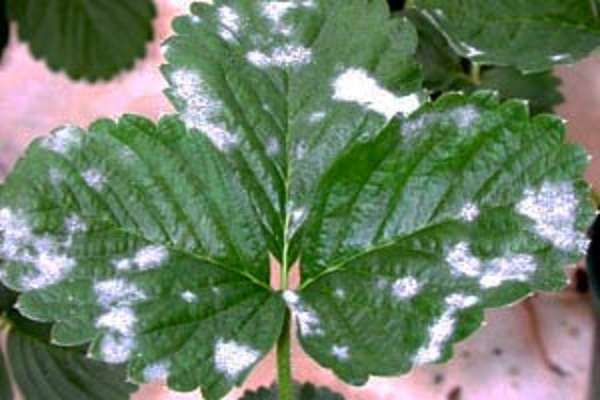
When strawberries are infected with powdery mildew, first of all, white plaque appears on the leaves and petioles of rosettes
Pests of remontant strawberries
Pests can cause significant damage to the crop, and sometimes even lead to the death of plants.
Strawberry mite
It is impossible to see this dangerous pest with the naked eye, since its size does not exceed 0.2 mm. A lesion can be diagnosed by the following signs:
- All leaves - both young and old - are deformed, become folded and wrinkled, acquire a yellowish tint and oily coating. They die off a little later.
- The growth of bushes slows down, and in advanced cases it stops altogether. The plant dies.
- The number of flowers decreases annually and, accordingly, the yield decreases.
- The winter hardiness of the affected plants decreases sharply, and an increasing number of them die from frost.
To finally make sure that the diagnosis is correct, you need to examine the affected leaf using a professional optical device with a magnification of at least eight.
To prevent damage by strawberry mites during the period of mass egg laying (early May), strawberries are treated with the effective acaricide Neoron, which will protect plants for up to six weeks.
During the fruiting period, Fitoverm is used to combat the pest, which is a biological preparation with a waiting period from the last processing to eating berries, which is only two days.
Spider mite
This parasite has a slightly larger size - 0.4-0.6 mm. You can find it by the cobweb with which it covers the leaves, flower stalks and berries. The spider mite loves hot weather - a comfortable temperature of + 30 ° C. In the process of life, it sucks the juice from the leaves, reducing the plant's immunity. In addition, the spider mite is a carrier of gray mold spores. Prevention and control are the same as for strawberry mites.
Reproduction of remontant strawberries
The remontant strawberry is a very productive crop and, therefore, its bushes degenerate rather quickly. Unlike ordinary garden strawberries, which are replaced after four years (and there are varieties that bear fruit for up to seven years), remontant strawberries bear fruit for three years. Therefore, already in the fourth year, the used bushes should be removed and new ones should be planted instead. In practice, you have to plant strawberries annually, having three beds for this. The scheme of work is as follows:
- In the spring of the first year, strawberries are planted in the first bed and the first small harvest is obtained.
- The next year, a second bed is planted, which will also give some berries. And the first one gives the main harvest this year.
- In the third year, strawberries are planted in the third bed. In this year, the main crop is harvested from the second, and the first completes fruiting. In the fall, old bushes are removed from it and the garden bed is prepared for the spring planting of new seedlings.
- Thus, a continuous conveyor of annual stable fruiting is obtained.
For these purposes, the gardener needs to have a certain amount of planting material every spring. It is more profitable to make it yourself and there are three ways for this.
Mustache
If the strawberry variety has a mustache (side shoots), then you can use them to obtain the required number of seedlings while maintaining varietal characteristics. They do it like this:
- For reproduction, select individual plants (they are called mother plants) and leave 5-7 whiskers on them (they usually begin to appear at an air temperature of + 15 ° C and daylight hours more than 12 hours), removing the rest. If this is not done, then the resulting outlets will be weak and unsuitable for reproduction. And you should also remove all peduncles as they appear - it is impossible to get both planting material and a harvest of berries from one bush at the same time.
- It has been noticed that whiskers formed in July take root better. Several outlets can form on each of them, but to get powerful, healthy bushes, only one should be left, located closer to the mother bush. The mustache is cut off after the first outlet with sharp scissors or pruning shears.
- As soon as roots begin to appear on the mustache, you should attach them to the ground with wire staples or hairpins and sprinkle with moist fertile soil. Some gardeners bury a glass with a fertile substance in the place of rooting of the future seedling, in which they root the plant. Of course, this method is more troublesome, but it ensures a painless plant transplant in the future.
- Then water the plants at intervals of 2-3 days and carefully loosen the soil around them.
- When 4-5 true leaves grow from the rosettes, a well-developed “heart” is formed, and the roots reach 6-7 centimeters in size, the seedlings are ready for transplantation. The mustache is cut ten centimeters from the mother bush and a seedling with a clod of earth is dug out for planting in a prepared bed.
- And you can also lay seedlings for storage for spring planting, guided by the rules outlined above.
Video: propagation of strawberries with a mustache
By dividing the bush
Reconstruction strawberries often lack a mustache. In this case, the method of reproduction by dividing the bush (particulate) is used. At the same time, varietal characteristics are also preserved.Unlike the previous one, this method allows you to use fruiting bushes for reproduction, while simultaneously getting a crop from them. This can be done both in spring and in autumn, after fruiting. Usually, plants in the third year of life are used to divide the bush. The sequence of actions is as follows:
- They dig out a well-developed fruitful bush and carefully free its roots from the ground.
- Using a sharp knife or pruning shears, divide the bush so that on each of its parts (division) remain intact: a heart, 3-4 leaves and roots.
- Old brown roots are cut, and young ones are cut to a length of 5-6 centimeters.
- The seedlings are ready for planting or storage.
Video: reproduction of strawberries by dividing the bush
Seedlings grown from seeds
This method is used less often, since it is more troublesome and does not guarantee the safety of varietal traits. Seedling seeds can be purchased at the store or collected by yourself. You should know that they retain their germination capacity for no more than one year and it is no more than 50-60%.
For self-collection of seeds, several ripe berries are selected and a thin surface layer of pulp is cut from them with a blade. Dry the resulting strips in a warm place, avoiding direct sunlight. After that, rub the dried pulp with your fingers, separating the seeds from it. The algorithm for growing seedlings from seeds looks like this:
- Seeds are planted in February on a compacted wet surface of a soil mixture (you can buy it ready-made in a specialized store), placed in a suitable container. Seeds are slightly pressed and covered with glass or foil.
- The container is placed in a refrigerator for three days, after which it is transferred to a warm (23-25 ° C) dark place without drafts. The soil is periodically moistened with a spray bottle.
- After about a month, shoots should appear, after which the container is placed in a bright place with a temperature of 16-18 ° C.
- By illuminating with a fluorescent lamp, a daylight period of 14-15 hours is created.
- After the appearance of two true leaves, the temperature is reduced to 12-15 ° C.
- When the plants have 3-4 true leaves, they dive into separate containers.
- After 10 days, the seedlings are fed with phosphorus-potassium fertilizers, for example, Solution, Kemira-Lux. Top dressing is repeated at intervals of 2-3 weeks up to planting in the ground.
- At the end of May, when 5-6 true leaves are formed, the seedlings are ready for planting. It should be hardened two weeks before.
Storage of planting material before planting in the ground
If winter storage of planting material is necessary, then at the end of September the plants are tied in bunches and placed in boxes, on the bottom of which wet moss is pre-laid. The boxes are covered with lids and sent to the basement. The optimal storage conditions are:
- humidity in the range of 85-90%;
- air temperature within + 2-6 ° C.
A small amount of seedlings can be stored in a regular refrigerator. To do this, they are placed in a plastic bag, after slightly sprinkling with water and pressing tightly against each other.
Strawberry seedlings storage using Frigo technology
Recently, the method of storing strawberry seedlings using the Frigo technology has been increasingly widespread. Its essence is as follows:
- In the second half of November, when the air temperature drops to + 5 ° C, seedlings are excavated in nurseries.
- They are sorted, all leaves are cut off and placed in plastic bags. The bags are placed in cardboard boxes.
- Storage takes place in refrigerated chambers at a temperature of + 1-2 ° C.In this form, seedlings are stored for up to one year.
- In the spring, after planting in the ground, the plants quickly take root due to the absence of leaves. After 3-5 days after planting, young leaves appear, and after 2-2.5 months the strawberry begins to bear fruit.
Short-term storage of seedlings before planting
Sometimes it happens that the purchased strawberry seedlings cannot be immediately planted in the garden. In this case, it is better to dip the roots of the seedlings into a mash made of mullein and clay, and then place them in a humid environment - sand, sawdust, moss, etc. In a cool place, such seedlings can be stored for 2-3 days.
Methods for growing remontant strawberries in limited areas
In cramped conditions, when the site is small and there is not enough space for everything, gardeners resort to various tricks and tricks.
Growing in boxes and boxes
Strawberries are often grown in various containers (boxes, boxes, buckets, flowerpots, etc.), placing them in a vertical plane, which gives an increase in planting areas. The advantages of this method are obvious:
- Containers with plants become mobile beds - they can always be moved to a new place.
- In autumn, they can be brought to the veranda or greenhouse, while extending the fruiting period for some time.
- The berries do not come into contact with the ground, which practically excludes fungal diseases.
- Pests - beetles, slugs, bears - also cannot get to plants.
- Vertical beds are an excellent decoration for the site.
- Berry picking has been simplified.
For this method, any suitable container with a depth of at least 15-20 centimeters is suitable. The bottom should be perforated to prevent moisture stagnation. The planting process is not difficult and is no different from planting indoor plants. As usual, a small drainage layer (expanded clay, crushed stone, etc.) is laid on the bottom of the container and filled with a nutritious soil mixture. It should be loose and fertile. Plants are planted according to the already known algorithm and the boxes are placed in the right place. When caring for strawberries, more frequent watering will be required, since the soil in the boxes dries out much faster than on the garden bed. And also regular feeding is needed, since in a limited volume of soil with abundant fruiting, nutrients are quickly consumed.
Photo gallery: options for growing remontant strawberries in various containers
- Collecting strawberries from boxes hung on the wall is greatly simplified
- The mobile strawberry bed can be easily moved to a new location
- The plane of the fence can also be used for growing strawberries
- You can grow strawberries in a pyramid
- The old chest of drawers is an original place for growing strawberries
- Hanging in a flower pot, strawberries are a wonderful interior decoration
Growing in pipes
To grow strawberries in limited areas, plastic sewer pipes with holes cut into them for bushes have recently been increasingly used. Let us briefly describe this method.
The principle is that plastic pipes with a diameter of 110-200 mm are filled with nutrient soil, after cutting holes in them. And also a perforated water pipe with a diameter of 20-30 mm is placed inside this pipe for supplying irrigation water and liquid fertilizers. The pipes prepared in this way can be installed both horizontally and vertically. They can be placed outdoors and in a greenhouse. You should be aware that due to the small volume of soil, watering and feeding will be required quite often. Moreover, the best way to apply fertilizers is in liquid form during irrigation. It is best to use automation systems used in hydroponics for irrigation and fertilization with this growing method.
Hydroponics (from gidro - water and other-Greek.πόνος, pónos - work) is a method of growing plants in artificial environments without soil. The plant's nutrition is obtained from the nutrient solution surrounding the roots. The feeding of the nutrient solution is easily automated.
Photo gallery: growing strawberries in pipes
- The structure for growing strawberries in vertical pipes is easy to make yourself
- Strawberries are grown in horizontal pipes, usually in three tiers
- Strawberry pipes can be placed in the greenhouse
To plant and grow remontant strawberries, a gardener will need a lot of knowledge and effort. But with due diligence and diligence, the result should please with abundant and regular harvests of healthy and tasty berries.
